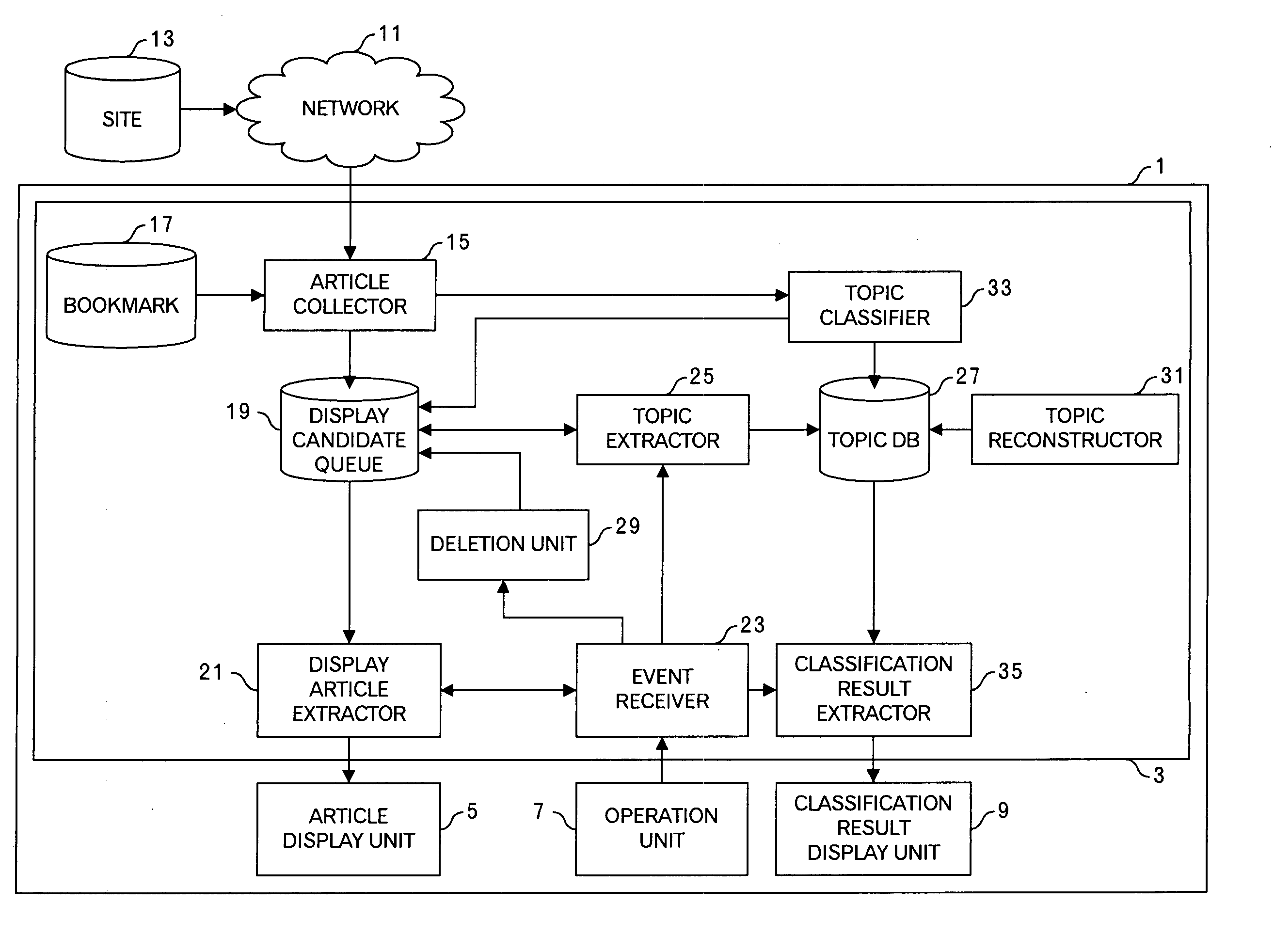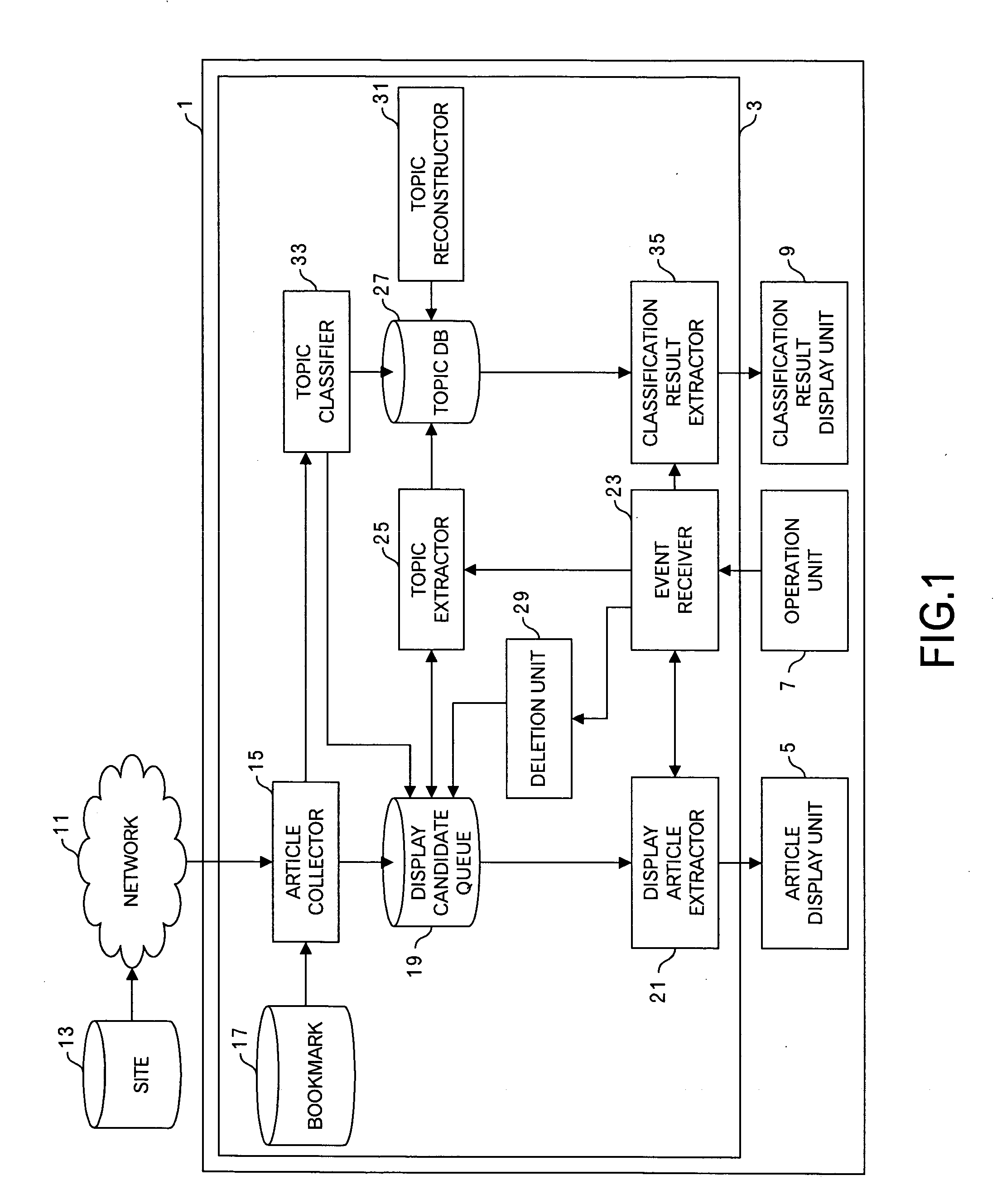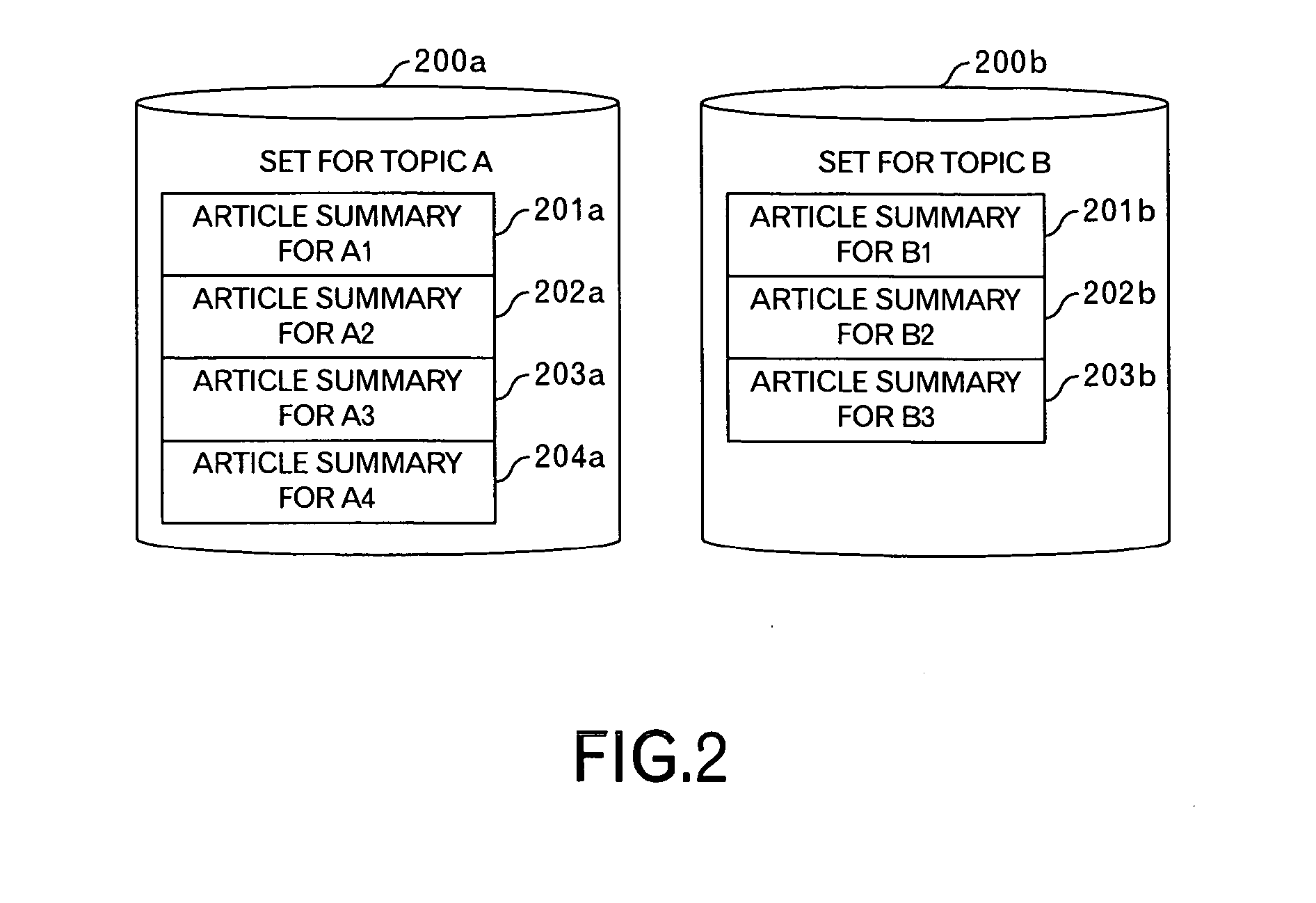Article reader program, article management method and article reader
a reader program and article technology, applied in the field of article data efficiently managing, can solve the problems of limited number of articles displayed in a fixed time, difficulty for users to read data, and difficulty in a user's reading data, and achieve the effect of simple user operation to subscribe to an article and small screen occupation
- Summary
- Abstract
- Description
- Claims
- Application Information
AI Technical Summary
Benefits of technology
Problems solved by technology
Method used
Image
Examples
first embodiment
of the Invention
[0050] The outline of a first embodiment of the invention will be described with reference to FIGS. 1 to 4. A computer 1 in the first embodiment of the invention is an apparatus to execute a ticker type RSS reader program 3, and further includes an article display unit 5, an operation unit 7, and a classification result display unit 9 as an input and output interface. The computer 1 is connected to article providing sites 13 through a network 11 such as, for example, the Internet. The RSS reader program 3 executed by the computer 1 is the program of acquiring data called an RSS document from the article providing site 13, managing article summaries included therein, and integrating one or plural article summaries into one group as the need arises. That is, the RSS reader program 3 carries out grouping of one or plural article summaries into one set and manages them. The RSS reader program 3 includes an article collector 15, a bookmark 17, a display candidate queue 19...
example 1
Similarity Degree Function by Article Attribute Value
[0093] The article summary includes article elements such as a title, a URL, an update date, and an author, and as shown in FIG. 3B, these article elements belong to one of the compound key 301 and the article extraction element 303. These article elements are for expressing the feature of the article relating to the article summary. Then, with respect to two article summaries x and y, the similarity degree (i.e. partial similarity degree) with respect to the same article element is calculated, and after the partial similarity degree is multiplied by a predetermined weight, the total sum of the weighted partial similarity degrees with respect to all article elements is calculated. The value calculated in this way is defined as the similarity degree between the article summaries x and y. This is expressed by a following expression (2).
Sx(y)=Σ{wi×δi(x,y)} (2)
[0094] Where, wi denotes the weight of the article element i, and δi (x...
example 2
Similarity Degree Function Based on Link Reference
[0095] When the article body is downloaded from the URL included in the tag of the article summary, a hyperlink to refer to another document is often included in the downloaded article body. Then, a similarity degree function using a hyperlink is defined by a following expression (3).
Sx(y)={λ|L({x})∩L({y})|−|L({x})|} / {(λ−1)|L({x})|} (3)
[0096] Where, {x} denotes a hyperlink set in which one hyperlink as the tag value of the article summary x is made an element. L denotes a mapping from a hyperlink set to a hyperlink set, and L(X) denotes a set of hyperlinks included in the Web page designated by each element of the hyperlink set X. That is, L({x}) is obtained by reading out all hyperlinks included in the article body of the article summary x. Besides, |L| denotes the number of elements of the set L (that is, the number of hyperlinks) and λ denotes a predetermined coefficient (λ>1). According to the expression (3), in the case of...
PUM
 Login to View More
Login to View More Abstract
Description
Claims
Application Information
 Login to View More
Login to View More - R&D
- Intellectual Property
- Life Sciences
- Materials
- Tech Scout
- Unparalleled Data Quality
- Higher Quality Content
- 60% Fewer Hallucinations
Browse by: Latest US Patents, China's latest patents, Technical Efficacy Thesaurus, Application Domain, Technology Topic, Popular Technical Reports.
© 2025 PatSnap. All rights reserved.Legal|Privacy policy|Modern Slavery Act Transparency Statement|Sitemap|About US| Contact US: help@patsnap.com



